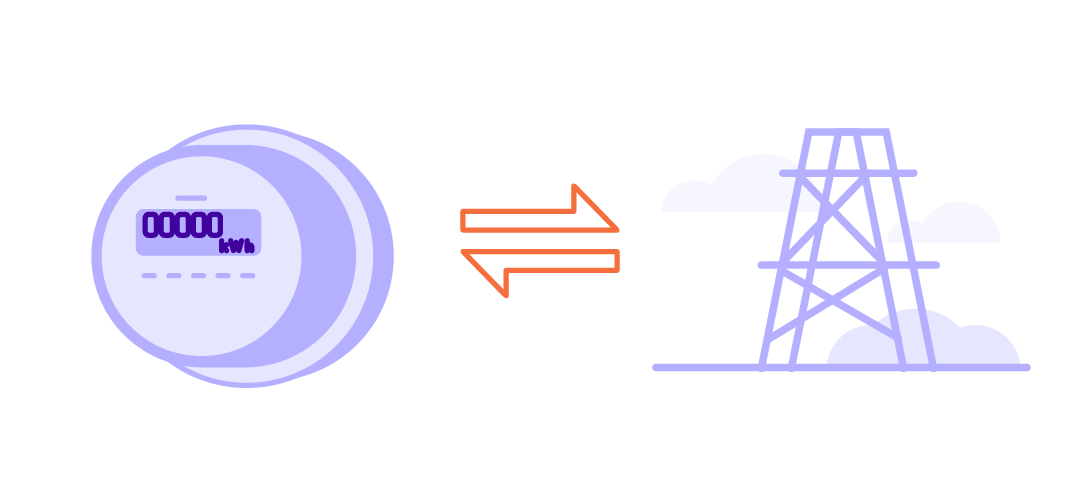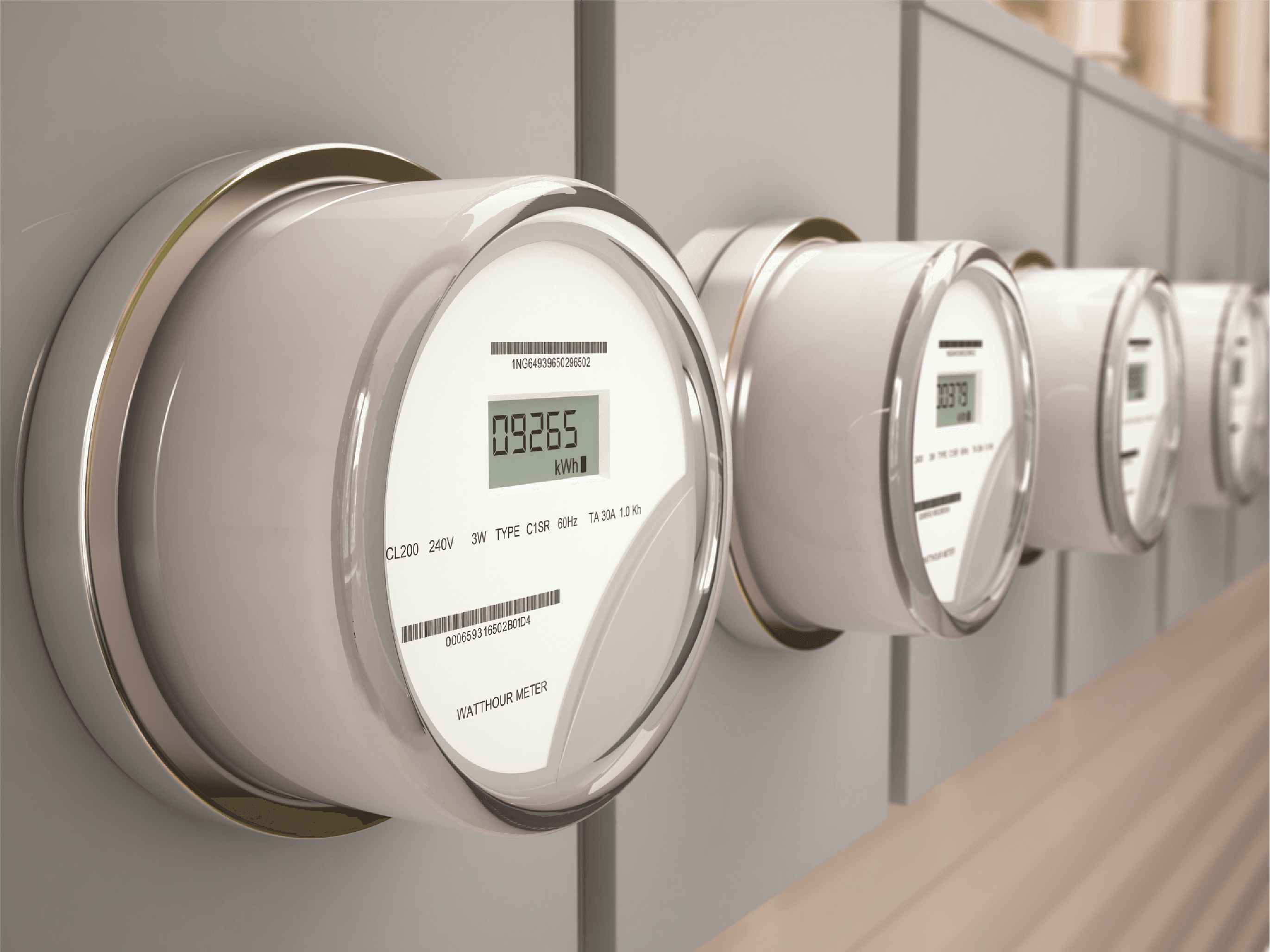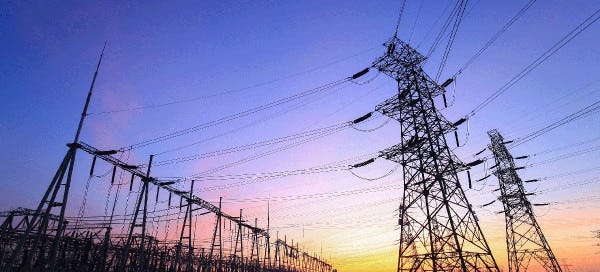Texas Smart Meters: How Do They Work and What Are The Benefits?
As the cost of living goes up, part of the reason why is because of rising energy costs. One way to help is with a smart meter… but what makes smart meters so smart, and how can they save you money? Keep reading for answers to your smart meter questions, and insights on how to put them to work for you.
How Do Smart Meters Work?
In years past, analog electric meters measured the energy use of a home or business month by month, and a professional meter reader would come by to read the measurements manually. Families would see them, wearing a shirt or vest that said “Meter Reader” on the back, walking through their yard to the side of their houses, where the meters were located.

A smart meter does things differently: it is a digital device associated with your unique Electric Service Identifier (ESIID) which monitors your energy usage every 30 minutes, 24/7, and wirelessly and instantly sends the readings to your utility company.
Smart meters also give a total electricity consumption reading every month, which is used by your retail electricity provider to calculate your electric bill, based on the rate associated with your plan.
How Accurate Are Smart Meters?
The major benefit of smart meters is super-accurate readings. Their ability to give precise and regular readings means that your bill is based on the energy that you have actually used, rather than an estimate based on past usage. And because smart meters are digital, they don’t degrade and slow down as they age, as traditional meters do.
What Costs and Savings Are Associated with Installing a Smart Meter?
Installing a smart meter does not have direct cost to you, although there can be a minimal monthly fee added to your bill, as approved by the Texas Public Utilities Commission. The related services that come with your smart meter, such as an in-house monitor showing your energy usage and access to a web portal where you can see details are provided at no cost.
The in-house monitor can help you determine how much energy is being drawn when you switch on certain appliances, and what behaviors might be driving up your bills, so you can adjust your usage accordingly.
To access the web portal, once you have a smart meter installed simply register your account at SmartMeterTexas.com to access up-to-date information on your energy consumption, rather than waiting for a meter reader to stop by your house and take a reading. Depending on what type of report you want, you can download the data instantly or receive it by email.
At Rhythm Energy, we also use smart meter data to keep you informed with Smart Alerts, which break down your weekly energy usage and project your costs based on a proprietary algorithm. You even get a bill predictor along with each Smart Alert, so that you’ll never again be surprised by an unexpectedly high electric bill.
How Secure Is Data Collected By Smart Meters?
The risk of privacy issues such as hacking is very low, because smart meters use data encryption and other security measures to protect your information, which are regularly tested and proven secure by utility companies. It’s also worth noting that they store no personal data such as names or addresses, but only collect energy usage data. Energy supplies cannot share this information without your permission.
How Do Smart Meters Handle the Extreme Weather Conditions Common in Texas?
Smart meters are a key component of the Smart Grid, which uses digital technologies, sensors, and software to match the demand and supply of energy (also in real time) while also helping make sure that the grid remains reliable and stable.
If a power outage happens due to a winter storm, a heat wave, or other causes, then a smart meter can help minimize the outage. The Smart Grid is designed to isolate problems, such as a tree that has fallen on a power line, and route electricity around the problem so that only a few, rather than hundreds, of homes and businesses are affected. This often happens in a blink of an eye, with your power going off only for a fraction of a second – not even enough time for your clocks to reset!
Just as importantly, in the case of a power outage your smart meter will immediately notify your utility company that there is a problem, so help can get to you more quickly and efficiently.
How Do Smart Meters Help If I Generate Solar or Wind Energy on My Texas Property?
Smart meters do more than simply measure your energy consumption, they can also measure excess energy generated by at-home renewable sources such as solar panels and wind turbines. If you have signed up for a buyback plan such as Rhythm Energy’s PowerShift Solar Buyback 12, we will know exactly how much energy was created by your system and how much you can sell back to the grid.
How Do I Get Started?
If you want a smart metering system installed, contact your local electric utility company, also called a Transmission and Distribution Service Provider (TDSP or TDU). They are responsible for all of the infrastructure in your area, including not only smart meters but also power lines, utility poles, transformers and more. They will set you up for a site visit and installation, so you can start experiencing the benefits that smart meters bring. To find out which TDSP serves your area, check out our article What Is a TDU?
FAQ
Can I opt out of using a smart meter?
Some people prefer analog meters, because they do not want to share real-time energy usage information with their utility. In this case, you can select not to have a smart meter, but instead stick with a traditional analog meter.
What happens to my smart meter data if I switch electricity providers?
Most retail electricity providers in Texas are prepared to integrate their systems with smart meter readings, so you should not encounter any issues. However, be sure to doublecheck with your provider, just to make certain.
What should I do if my smart meter displays an error message?
If your smart meter has a problem, then you want to contact your local electric utility company (TDSP). They will work with you to resolve it quickly and with the least hassle possible. If you’re unsure of which TDSP services your area, visit our article What Is a TDU?




